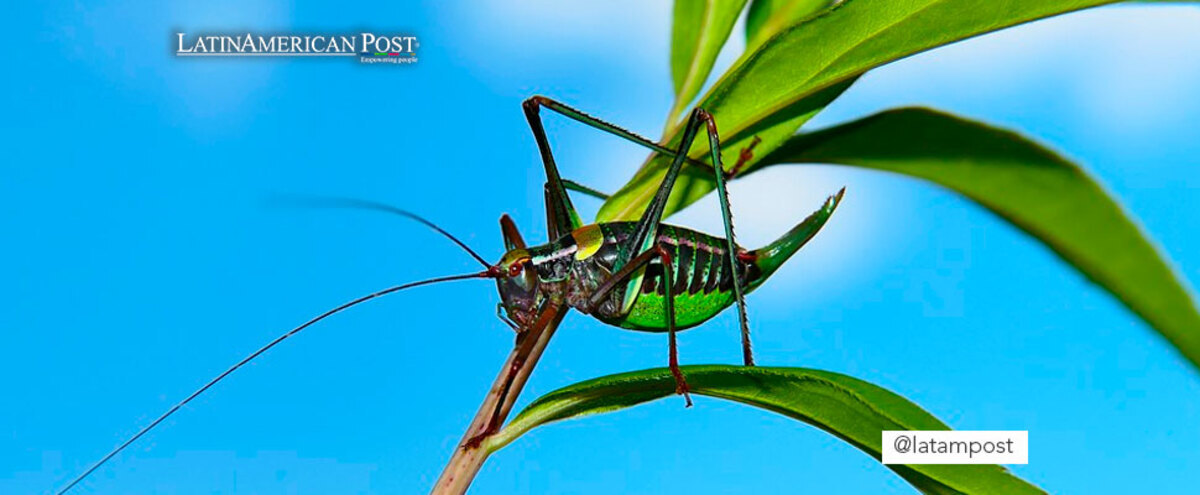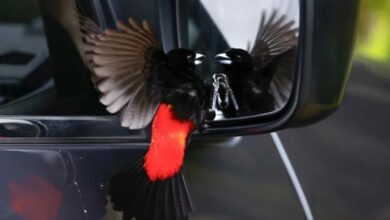Cricket Flour: A Beneficial Leap for Nutrition and the Environment
High Nutritional Value and Reduced Environmental Impact are Keys to Global Food Security that some Insects can Provide.

Photo: Pixabay
LatinAmerican Post | David Rivadeneira Soto
Listen to this article
Leer en español: Harina de grillo: un salto beneficioso para la nutrición y el medio ambiente
Cricket flour has been presented as a food alternative with less harmful consequences for the environment compared to extensive livestock. It also has a higher nutritional value at a much lower cost. In Latin America, apart from the indigenous experimentation in some regions around entomophagy, which is what the practice of eating insects is called, the implementation of the use of cricket flour in gastronomy has been taking place gradually. A process that is also experienced in various parts of the world.
In Mexico, chapulines are popular, which are a variety of cricket that is eaten in some regions of the North American country. In Colombia, the most representative is a species that is popularly known as the "culona" ant and a worm native to the Amazon called Mojojoy, which has become known in international gastronomy.
Cricket flour: a booming initiative
In Canada, for example, there is a company that produces 50 million crickets a week on its farm, according to its co-founder, Darren Goldin, in an interview with the Mexican media Business Insider. In Colombia, since 2015, the Arthrofood project has been developing the production of cricket flour and promoting its use in everyday cooking to popularize it and make it more accepted, since it still generates resistance in some people who are unaware of its multiple uses and have resistance to the subject.
Likewise, the University of La Sabana in Colombia published a book, in alliance with Arthrofood and the Ministry of Science, Technology and Innovation, among others, in which it collects the benefits of this product, recipes and the experiences of flour production. of cricket in the department of Cundinamarca. Cricket flour "contains all nine essential amino acids (histidine, isoleucine, leucine, lysine, methionine, phenylalanine, threonine, tryptophan and valine); each of them has a specific function in the human body, such as cell, tissues and muscles reparation, the synthesis of digestive enzymes and blood functions," the book states. In said publication, there are more than 30 recipes with this product.
The potential of this food source is enormous, since according to estimates made by the UN in 2019, in the next 30 years the world population will grow by 2 billion, which would imply an increase of approximately 70% in the production of food to meet the nutritional needs of citizens.
In this sense, protein is one of the most important macronutrients for development and adequate human nutrition, so this demographic growth would imply a greater demand in the production of meat industries worldwide to cover this protein requirement. However, it is known that this would have negative consequences at an environmental level, especially in the use of water and in the generation of greenhouse gases that affect global warming.
We recommend you read: Seaweed: flavor of the sea for the table and the environment
The advantages of insects
Several scientific investigations in the world show notable advantages in the protein of cricket flour as a replacement for beef and even chicken and pork, both in terms of production and in environmental consequences and nutritional factors. In a study by Wageningen University in the Netherlands, published in the journal Plos Medicine, it was found that 22,000 fewer liters of water are used in the production of one kilogram of insect protein and 85 times less greenhouse gases are generated compared to what is produced by taking out the same portion of beef.
It is also evident that, in terms of area, a minimum space is occupied in raising crickets, compared to the large extensions of land that are needed for the different types of extensive livestock, with the consequent deforestation that this entails.
On the other hand, there are the nutritional advantages that cricket flour has as food, as it has a high content of fatty acids such as Omega 3 and 6, and is also a source of high protein value. In turn, it is an ingredient with a variety of culinary applications, both in the gastronomic universe of salty and sweet; since it can be used for bakery and pastry products, in spreads, as well as in pastes and creams.
But it is not only used in human food, it has also been implemented in edible products for pets, such as cookies and croquettes. In this way, the alternative of insects to gain ground in food security in the near future is a viable solution with a lot of potential.




